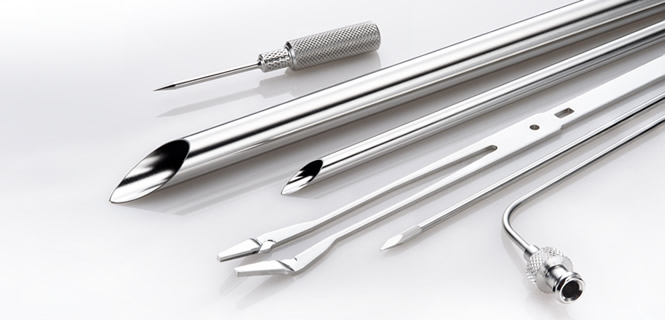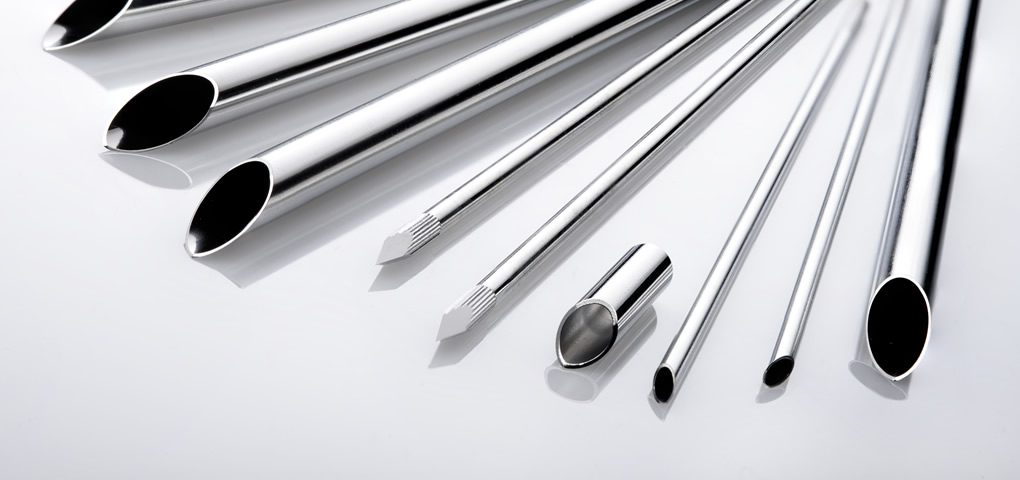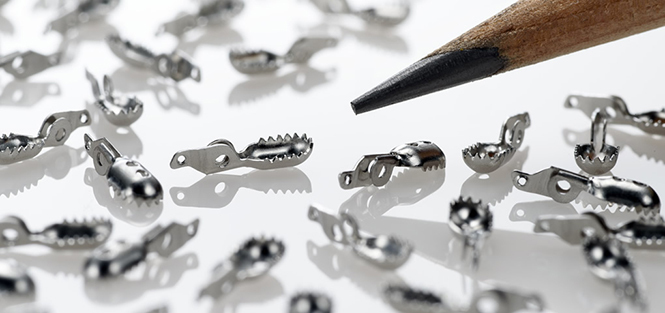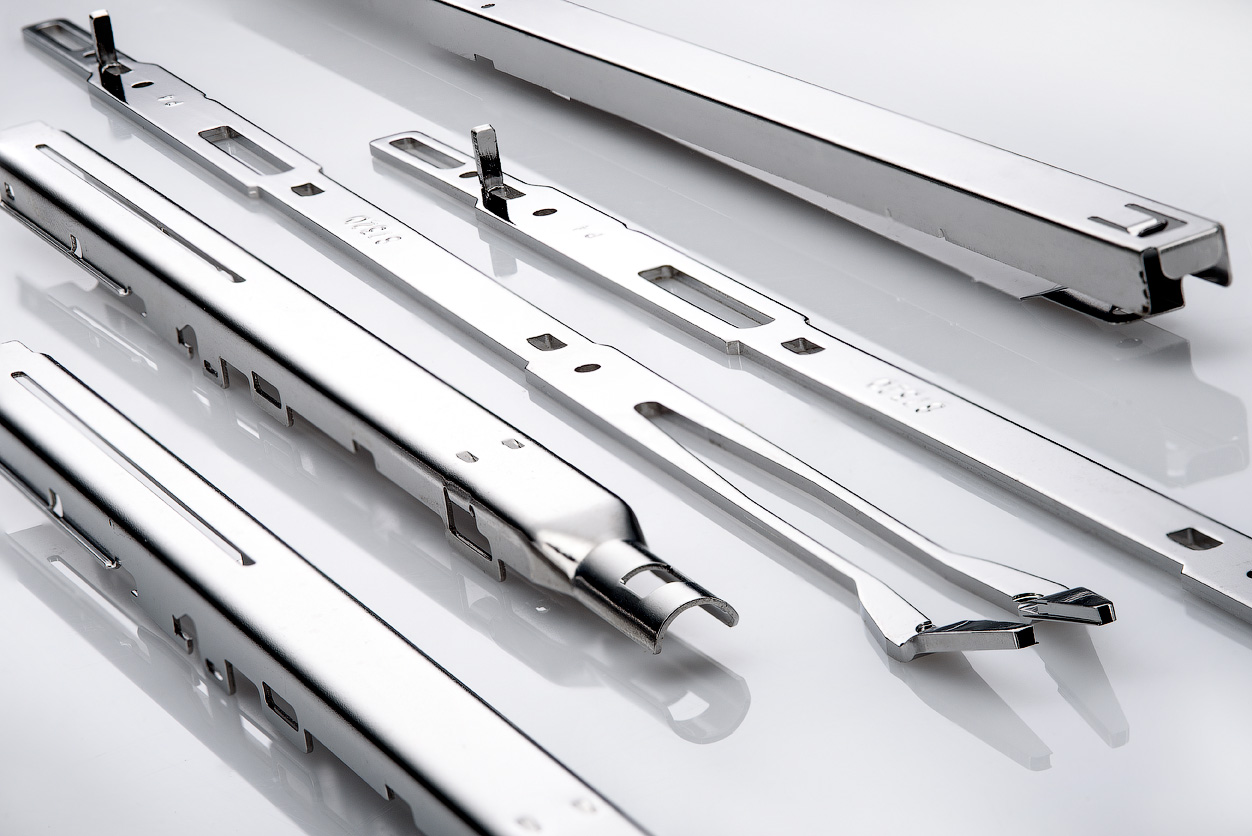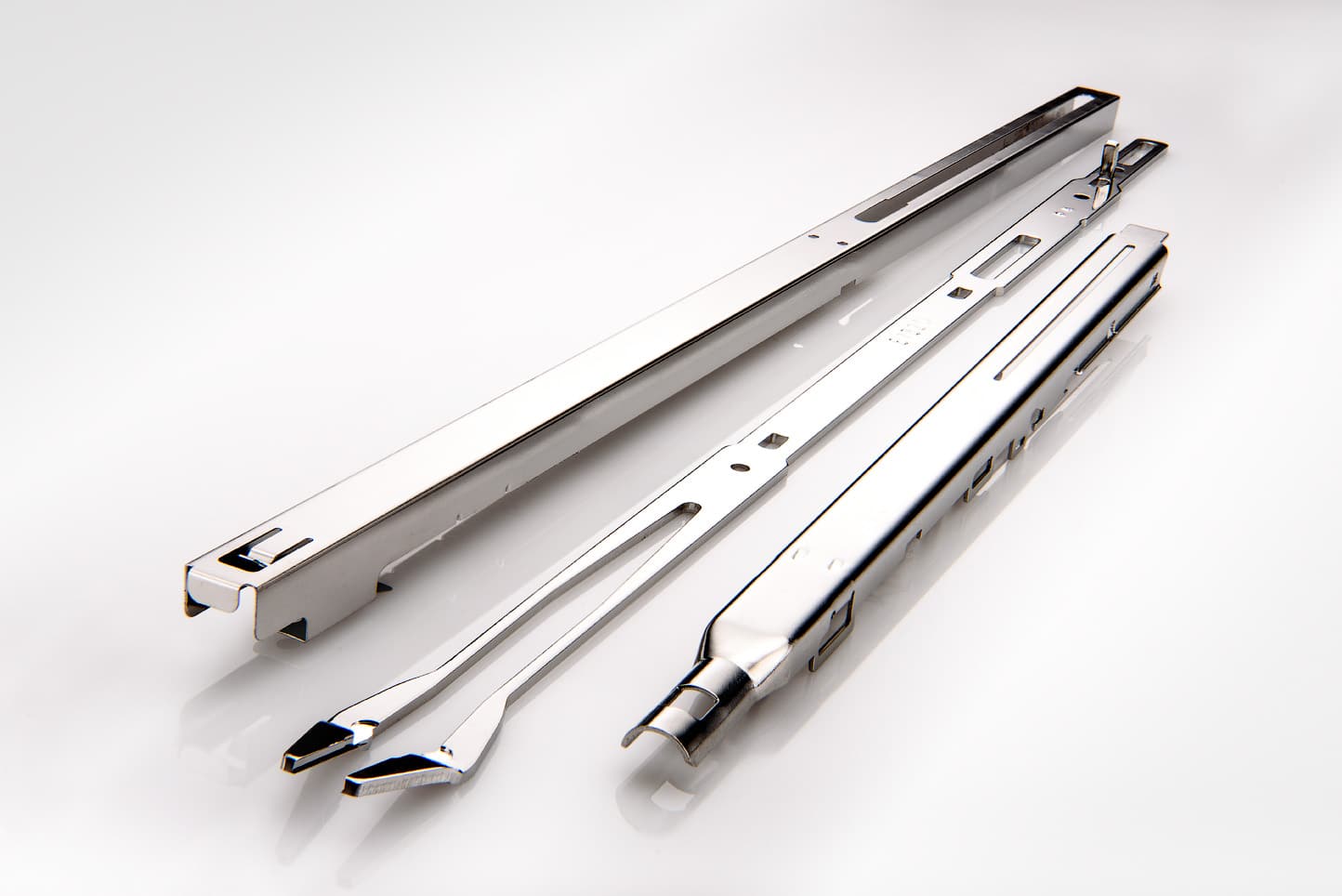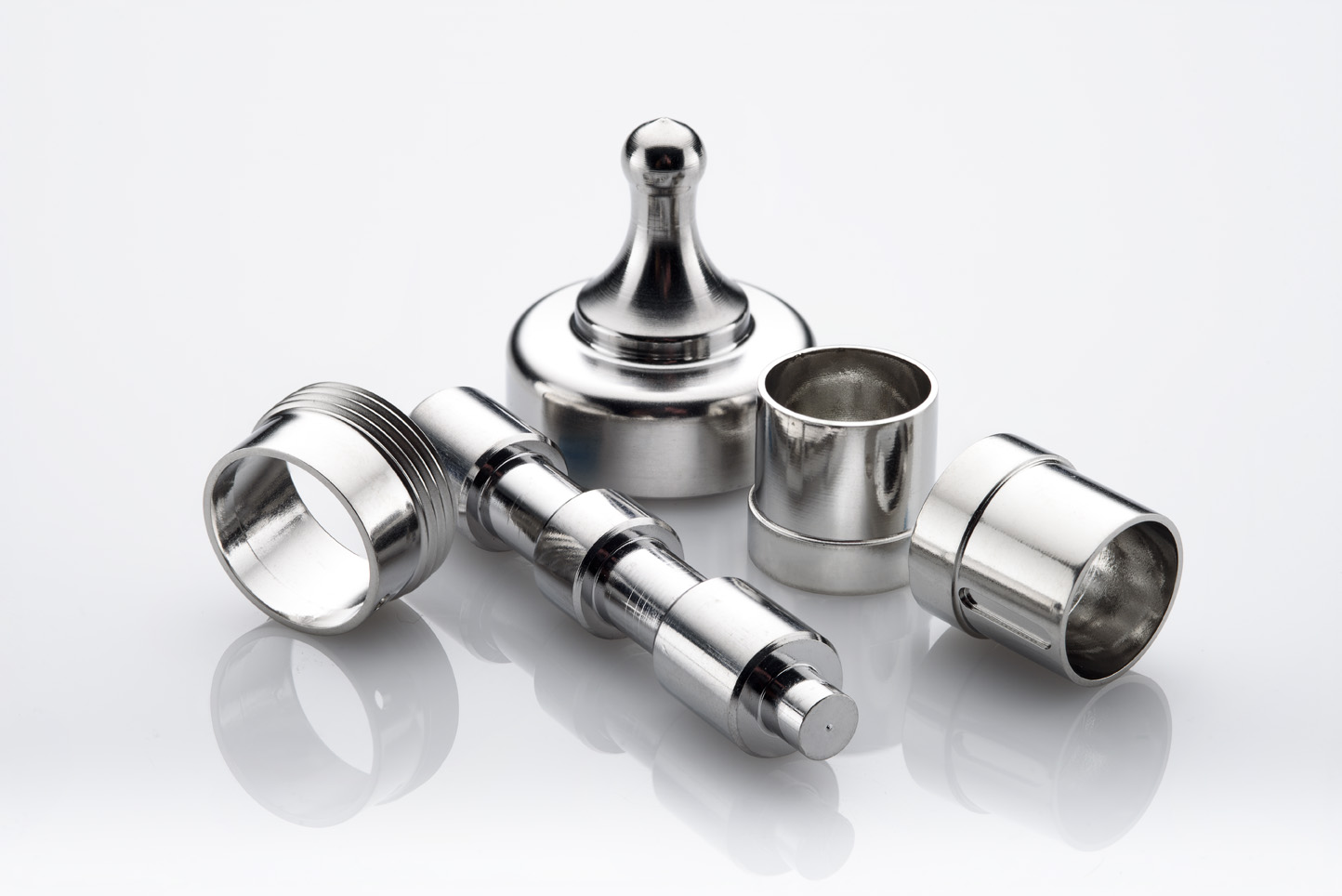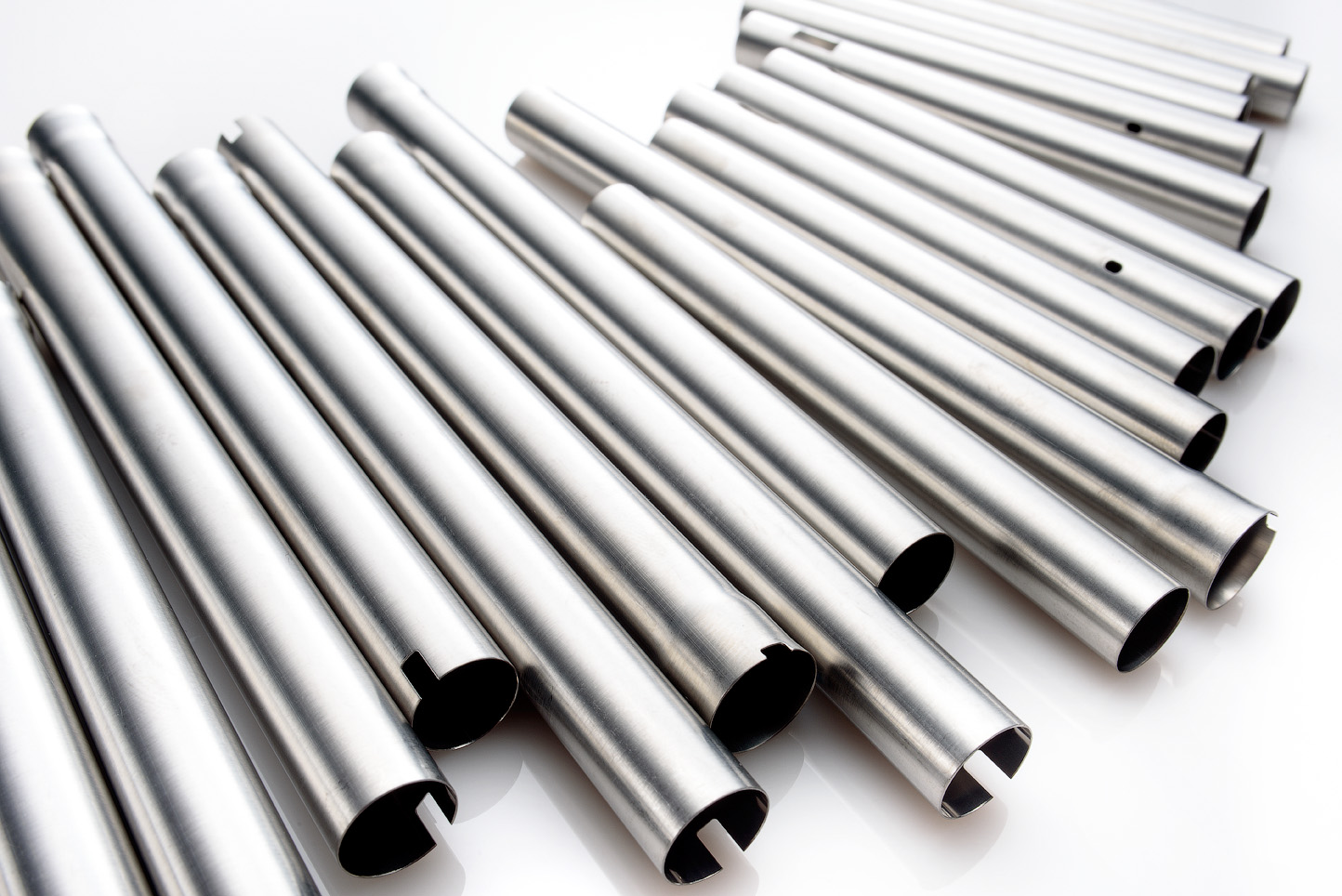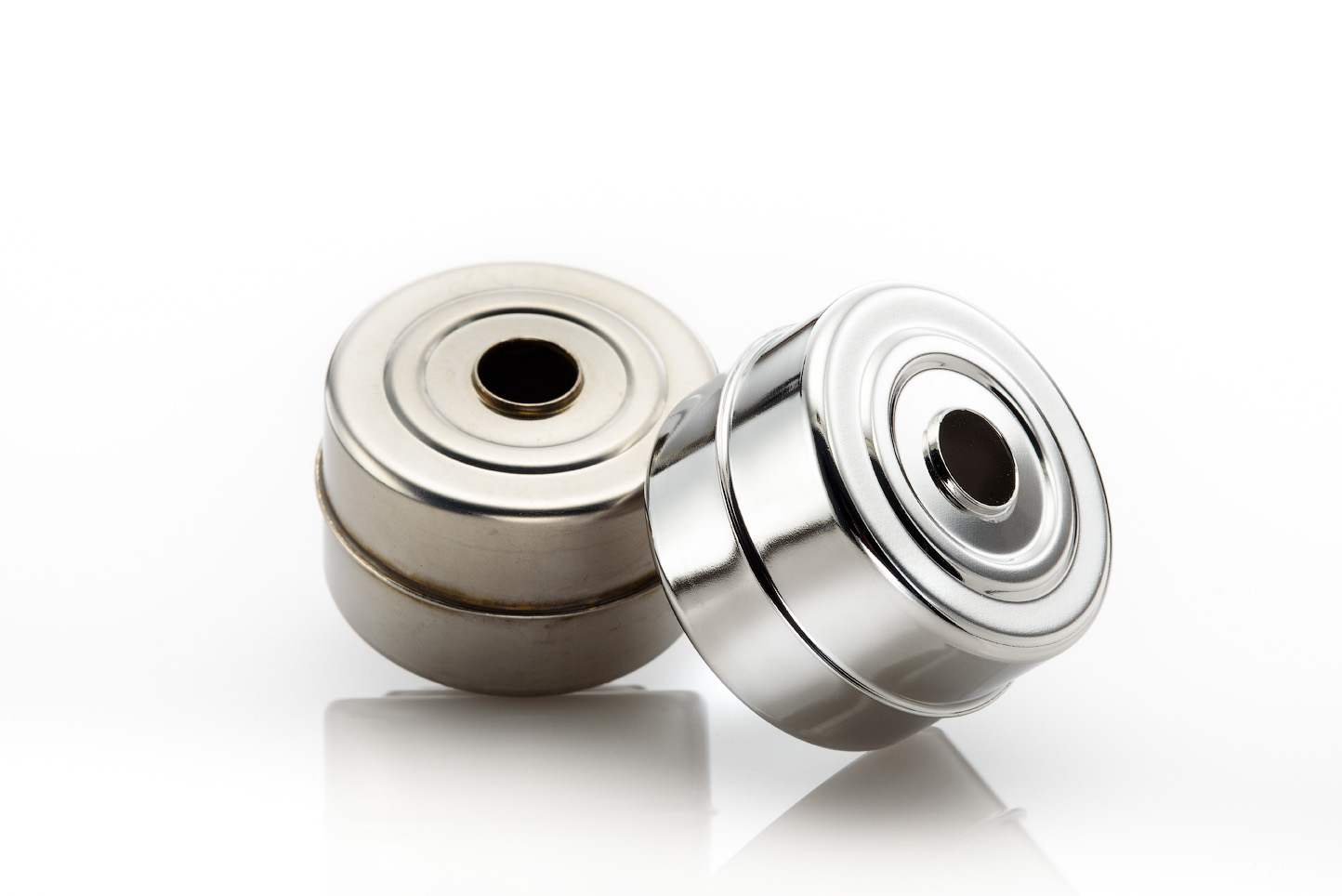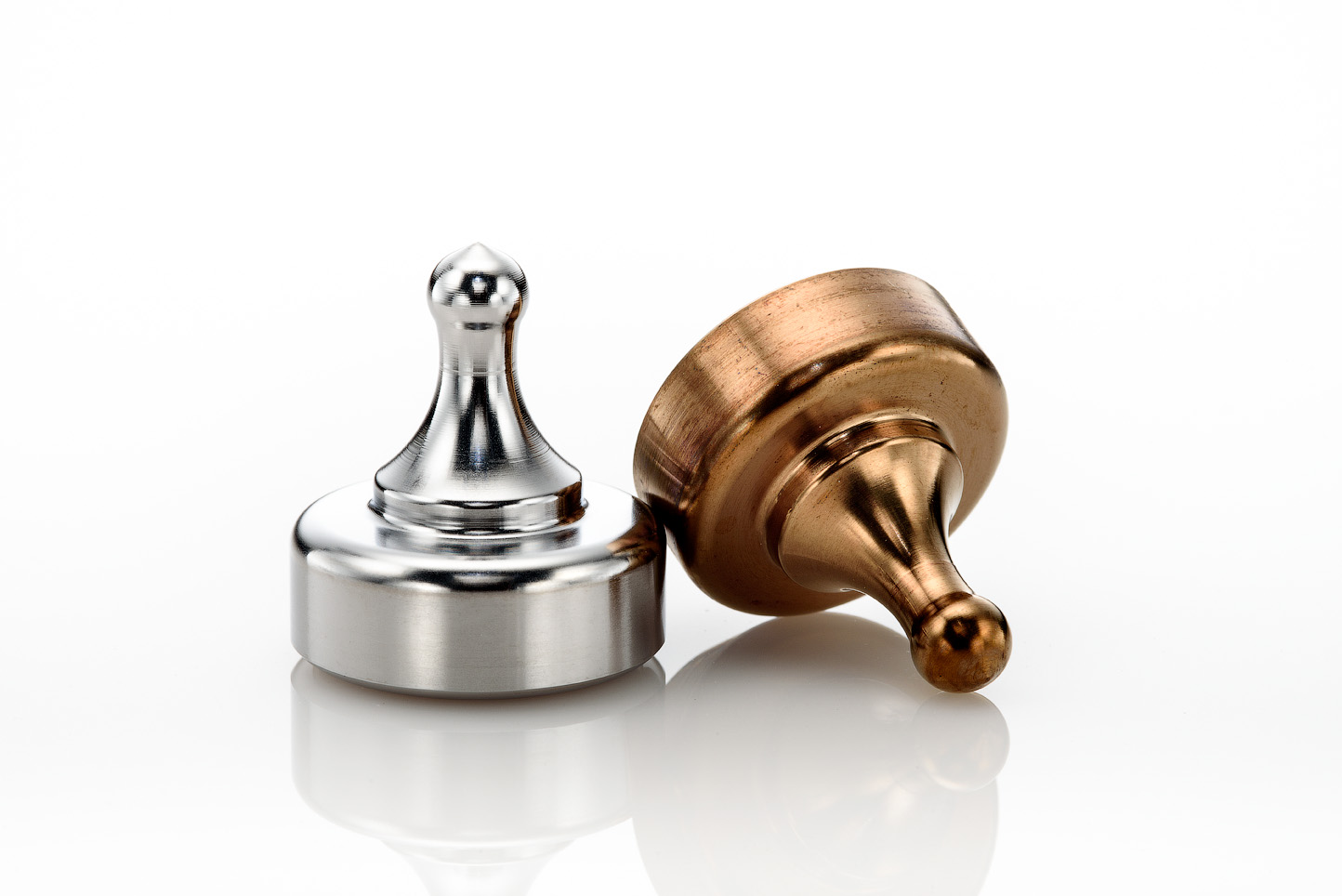What is passivation?
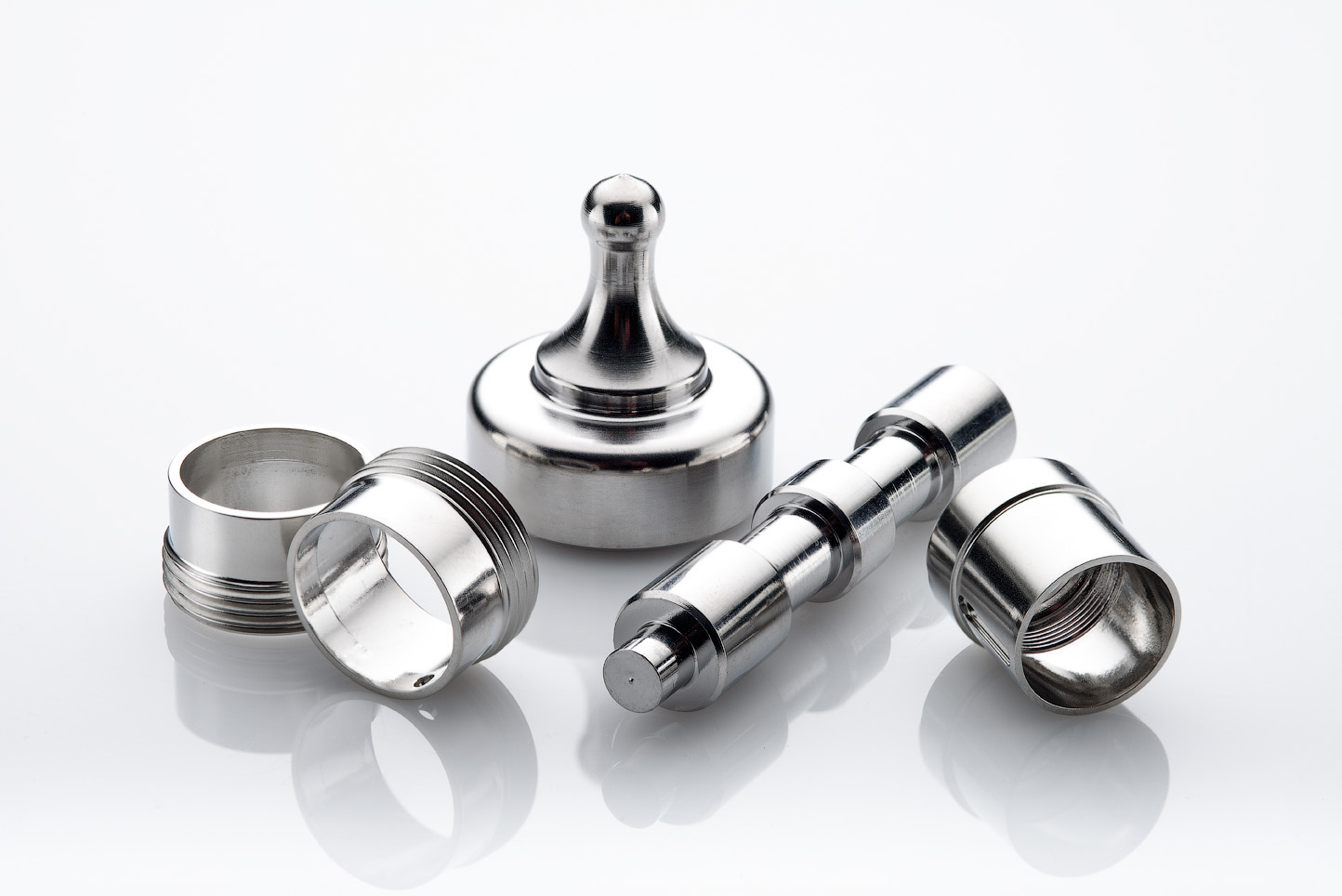
Understanding Passivation
Passivation is a chemical process designed to enhance the corrosion resistance of stainless steel. While stainless steel is naturally resistant to rust and corrosion, its surface can still contain contaminants or impurities from manufacturing processes, handling, or exposure to elements. These contaminants can compromise its corrosion-resistant properties.
Passivation involves the removal of these impurities from the surface of stainless steel, typically through electropolishing or other chemical treatments such as citric acid passivation. This process effectively cleanses the material, allowing the re-formation of a protective chromium oxide layer. This oxide layer, known as the passive film, acts as a shield, fortifying the stainless steel against corrosion, oxidation, and other forms of degradation.
The Benefits of Passivation
Enhanced Corrosion Resistance: Passivation significantly boosts the stainless steel’s ability to withstand corrosion, ensuring a longer lifespan for components and equipment.
Improved Cleanability: The removal of contaminants through passivation makes stainless steel surfaces easier to clean and maintain, ideal for industries with stringent hygiene requirements.
Preservation of Aesthetic Appeal: Passivation helps retain the aesthetic appeal of stainless steel by preventing discoloration, staining, or surface blemishes caused by corrosion.
The Chemical Composition of Stainless Steel
Stainless steel is an alloy primarily composed of iron, chromium, and often nickel, along with other elements depending on the grade. The typical chemical composition includes: Iron (Fe), Chromium (Cr), Nickel (Ni), Carbon (C), Manganese (Mn), Molybdenum (Mo), Silicon (Si), Phosphorus (P), and Sulfur (S).
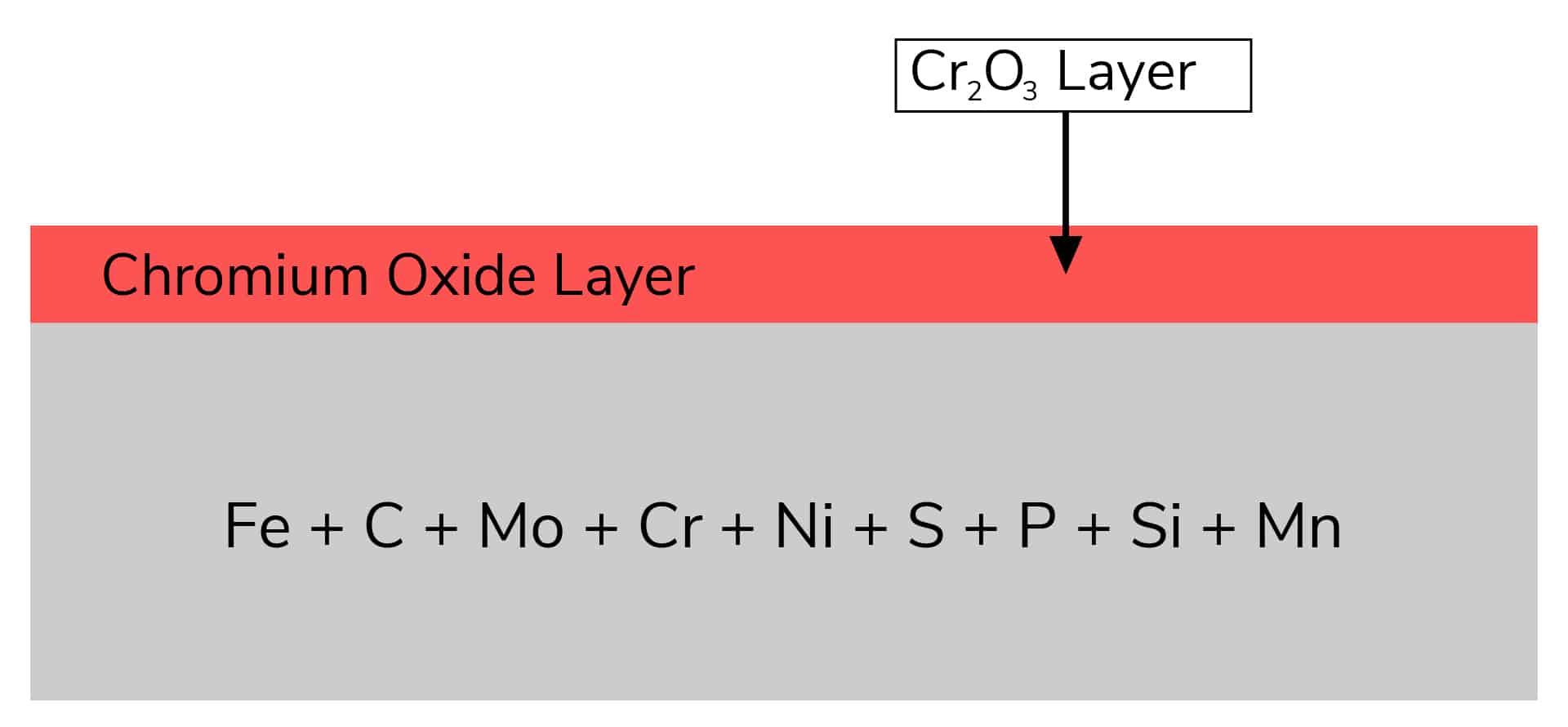
The Formation of the Chromium Oxide Layer on Stainless Steel
The formation of the chromium oxide layer on stainless steel is a critical process that gives the material its corrosion-resistant properties. When stainless steel is exposed to oxygen, chromium within the alloy reacts with the oxygen from the environment to form a thin, stable layer of chromium oxide (Cr2O3) on the surface.
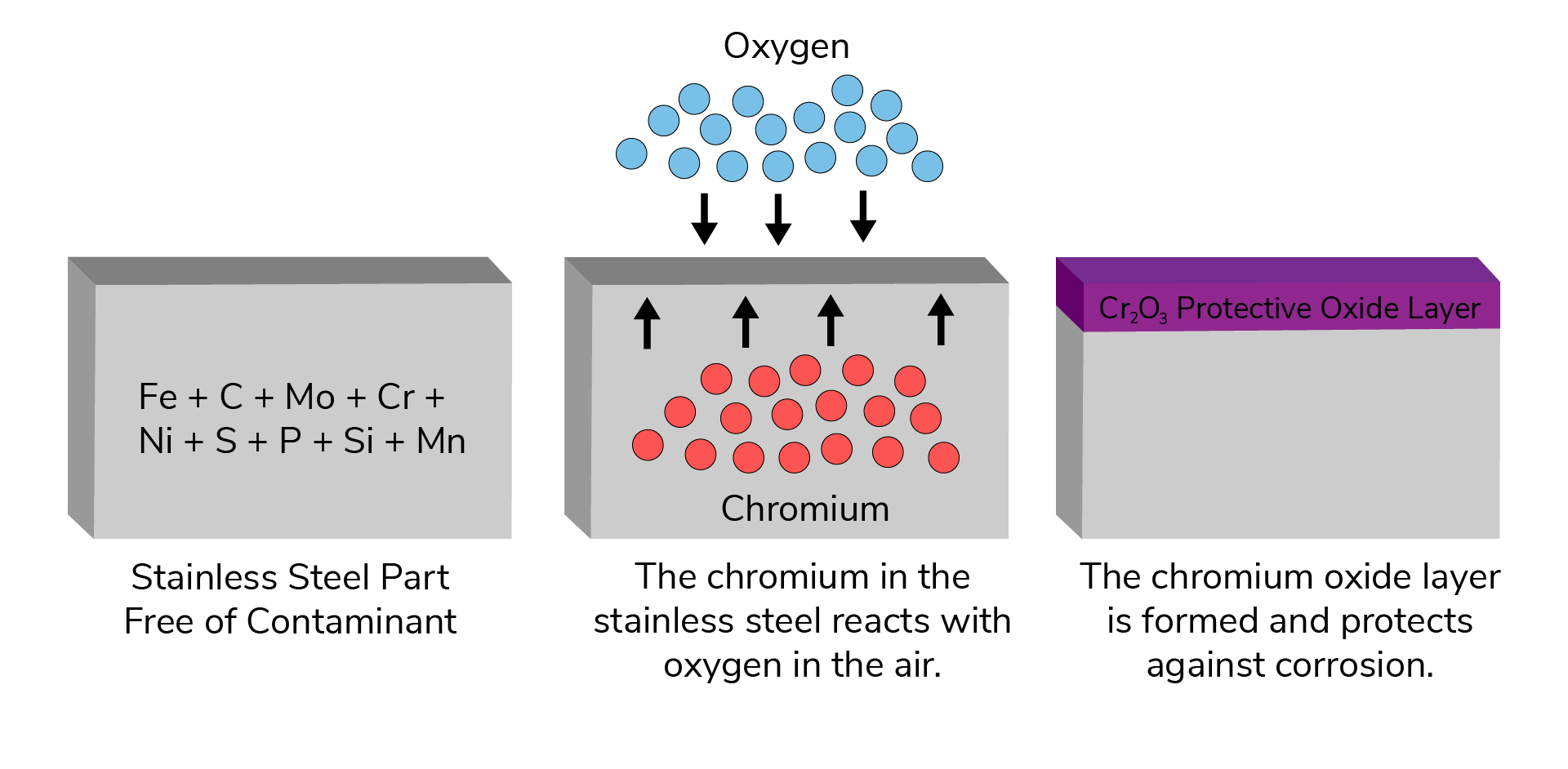
How the Passivation Process Restores the Chromium Oxide Layer of Stainless Steel
The passivation process restores the chromium oxide layer on stainless steel by removing contaminants and enhancing the natural formation of the protective layer.
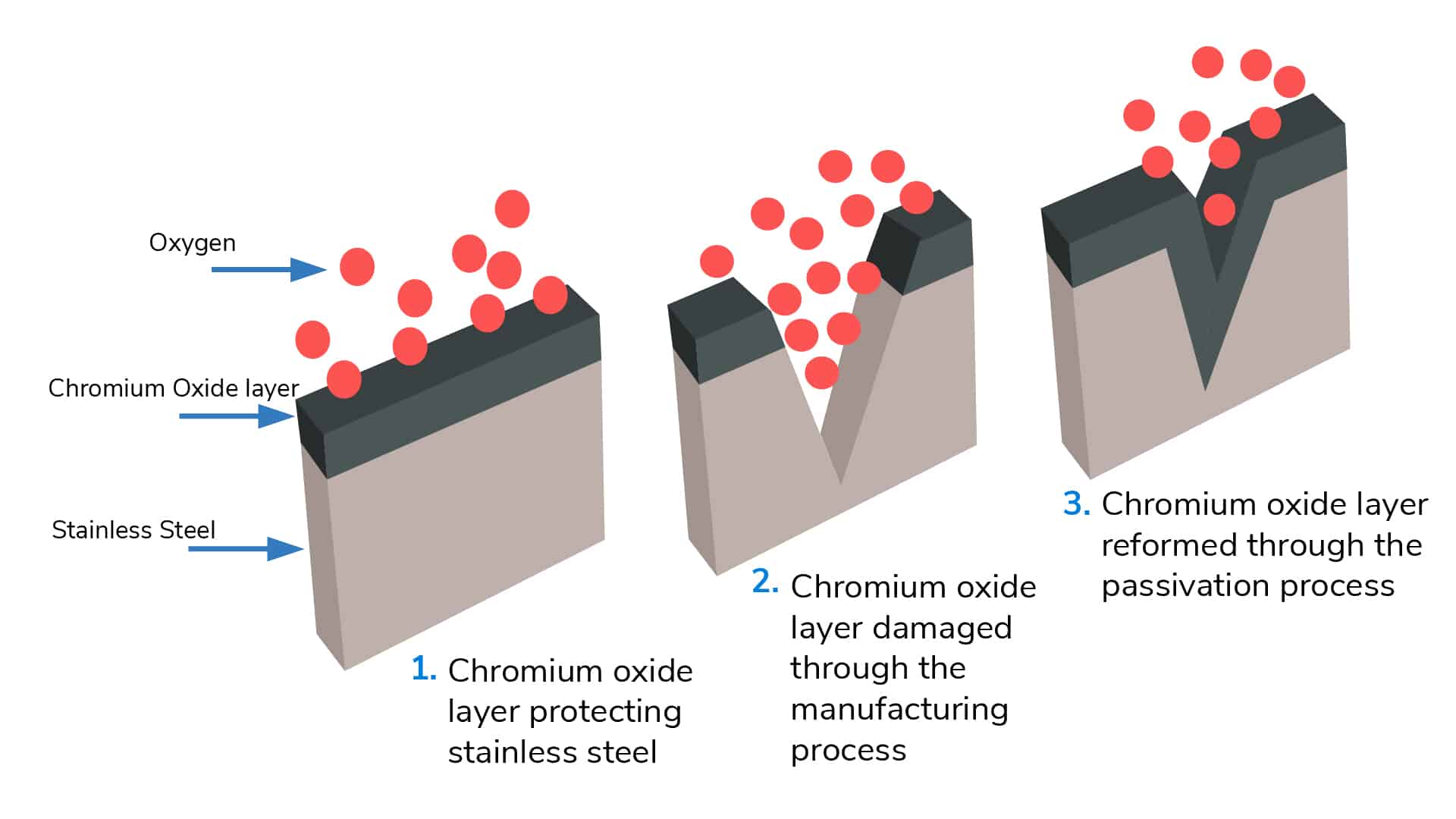
The Types of Processes Used to Passivate Stainless Steel
While electropolishing has been scientifically proven to be the most effective means of achieving stainless steel passivation, several different processes are commonly used, each tailored to specific needs and environments. Here are the primary types:
Nitric Acid Passivation: The most common method, involving immersion in nitric acid to remove free iron and contaminants, promoting the formation of a protective chromium oxide layer.
Citric Acid Passivation: An environmentally friendly alternative to nitric acid, using citric acid solutions to achieve similar results without the use of strong oxidizing agents.
Electropolishing: A more advanced technique where the stainless steel is placed in an electrolytic bath, and an electric current is applied to remove surface material, enhancing passivation and surface smoothness.
Alkaline Cleaning: Used before acid treatment, this process involves cleaning the stainless steel with alkaline solutions to remove organic contaminants, oils, and greases.
What is Electropolishing?
Electropolishing stands as an electrochemical technique known for its prowess in refining metal surfaces. Unlike electroplating, which adds metal layers, electropolishing delicately removes the outer layer of a metal component, akin to peeling off its ‘skin.’ This meticulous process is adept at addressing microscopic imperfections within the finish, offering thorough cleaning, deburring, and passivation. It’s a staple in manufacturing, ensuring parts emerge with pristine surfaces and enhanced durability.
Electropolishing Tank Diagram
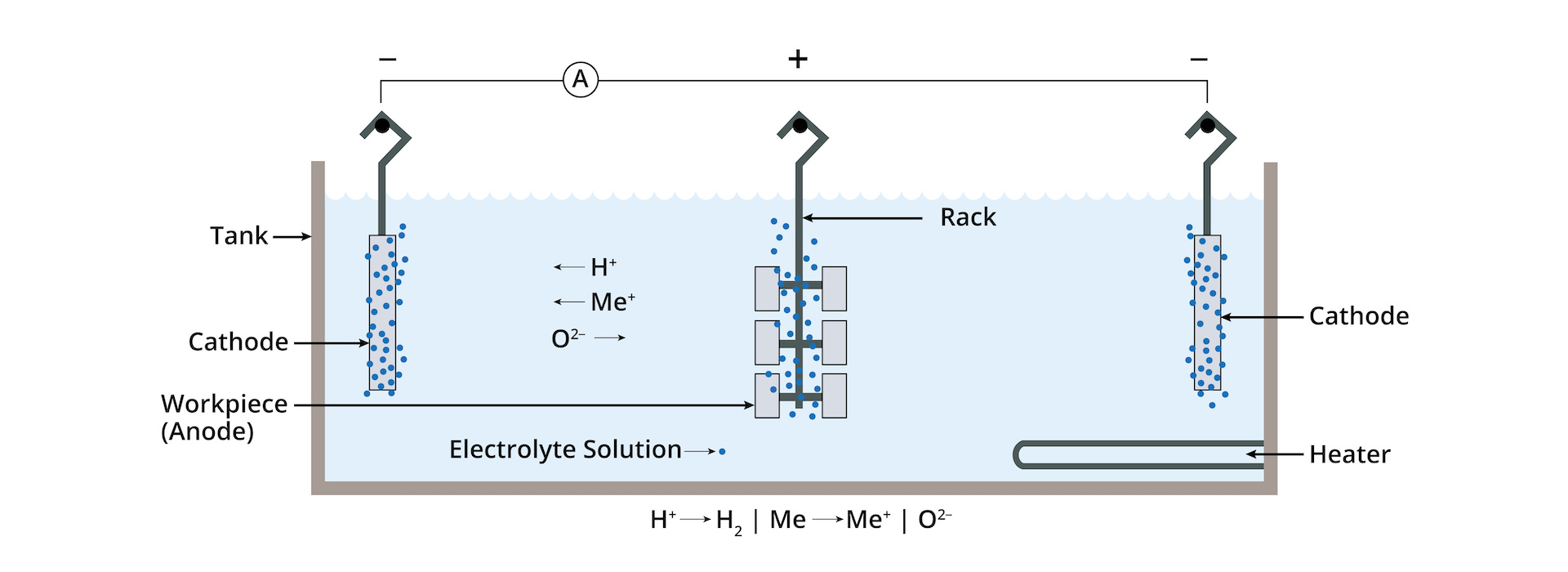
The New England Electropolishing Advantage
At New England Electropolishing, we understand the importance of the passivation of stainless steel. Our team of experts employs state-of-the-art techniques and industry-leading practices to execute precise and effective stainless steel passivation processes.
Beyond traditional passivation methods, our electrochemical passivation techniques provide unparalleled results. Stainless steel passivation not only removes impurities but also optimizes the surface, resulting in a smoother, more uniform finish. This advanced approach ensures maximum corrosion resistance and longevity for your stainless steel components.
Improve Your Stainless Steel Parts and Componants with New England Electropolishing
Whether for medical equipment, aerospace components, food processing machinery, or architectural features, passivation plays a pivotal role in ensuring the integrity and performance of stainless steel. At New England Electropolishing, we’re committed to delivering superior results, elevating the durability of your stainless steel products through our expert passivation techniques.
Experience the difference passivation can make in preserving and enhancing your stainless steel investments. Contact New England Electropolishing today to learn more about our passivation services and unlock the full potential of stainless steel in your applications.
What's the Difference Between Electropolishing & Passivation
Electropolishing Resources
What is Electropolishing?
Electropolishing is an electrochemical and reverse plating process that removes the outer layer of skin on a metal...
The Electropolishing Process
The electropolishing process is initiated by immersing a metal part into a temperature-controlled bath of electrolyte...
How Much Material Does Electropolishing Remove?
Electropolishing, when done properly is a highly controllable process which removes as little as...
How Much Will Electropolishing Improve the Surface of my Part?
Ra and RMS are both representations of surface roughness. Ra is calculated as the roughness average of a surface’s...
What is ASTM B912?
ASTM B912 is an industry standard for the passivation of stainless steel alloys through electropolishing...
What is ASTM A967
ASTM A967 is an industry standard specification for the chemical passivation treatments for stainless...
